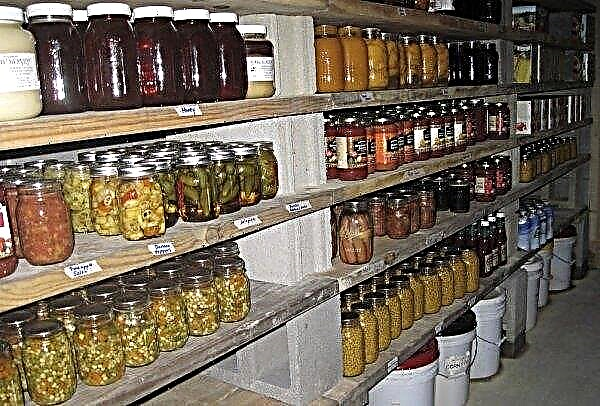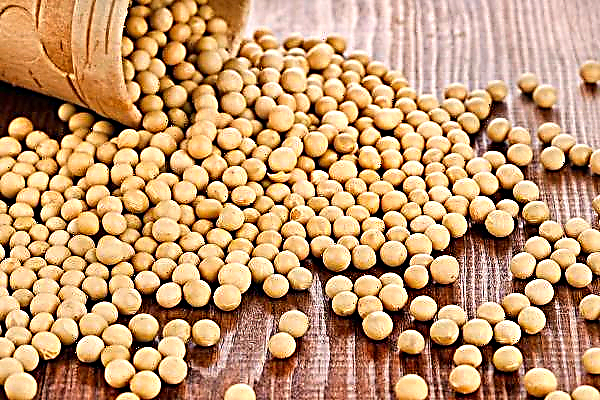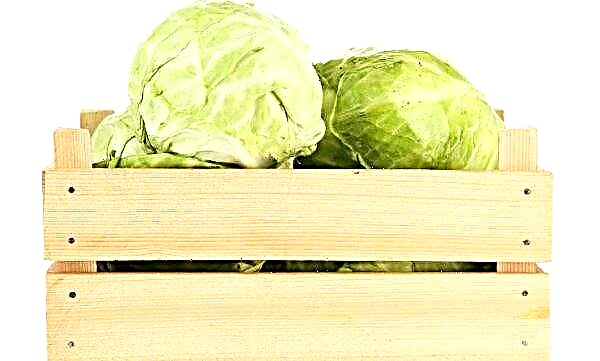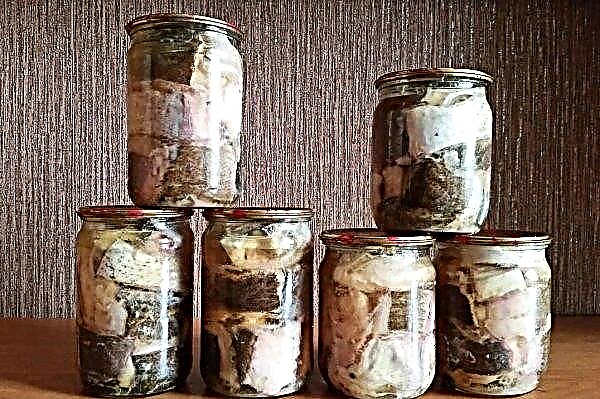Today, a decorative pond can be found in almost every household plot, and this is not surprising. After all, water near the house has a beneficial effect on the psychological state of a person, and according to Feng Shui teachings, also on the material. However, owners of water bodies in the garden also know how much care this decorative element requires. And one of the main points is the correct preparation of the reservoir for winter.
Do I need to clean a plastic pond for the winter
During the construction of a water body, many landowners opt for rigid plastic or fiberglass molds. Such a material has many advantages, but there is a small feature - its sensitivity to high pressure.
 Despite the fact that there is no need to remove the plastic pond for the winter, you will have to prepare the bowl for the cold beforehand.
Despite the fact that there is no need to remove the plastic pond for the winter, you will have to prepare the bowl for the cold beforehand.
It is known that after freezing, the water expands significantly, and therefore, in order to avoid tearing, plastic bottles filled with sand should be placed in the pond - the maximum ice pressure will be directed to them. At the same time, 1 bottle is required per 1 m².
The amount of water left for the winter in the reservoir depends on its location:
- if the pond is on the same level with the ground, there is no need to empty the water;
- with a slight elevation, the water level should be lowered to ground level.
It will also be good to place 2-3 logs in the pond before the onset of cold weather (you can replace them with rubber balls). These items will also contain ice pressure on the walls of the plastic mold.
Important! All elements of non-winter-hardy equipment, which include filters, fountain nozzles, hoses, nozzles, etc., are dismantled for the winter and stored in a dry room during cold weather.
Preparing a pond for wintering, depending on its size
The process of preparing the pond for the winter is carried out taking into account its dimensions. Water bodies are conventionally divided into small (with a total area of less than 20 m² and a depth of 1 m) and large. Prepare them for the cold should be different.
Draining
Small shallow ponds completely free from plants and its inhabitants, since a shallow depth implies the complete freezing of water and the death of flora and fauna. Next, a complete pumping of water is carried out, after which the walls and bottom are thoroughly cleaned with hard brushes.
Additionally, the pipeline is cleaned and purged, and then closed with a stopper made of soft material (for example, foam). Wooden products are not suitable in this case - this material is prone to swelling in water. Then the pond is once again typed and flushed.

In this form, a small body of water is ready for wintering, however, many owners fill it 2/3 with water to prevent a large accumulation of snow. A large pond does not require draining water, but before the onset of cold weather it is carefully cleaned of debris and fallen leaves.
At the same time, you can clean the bottom with simple garden rakes. In the future, after freezing, it will be necessary to break through the holes, due to which plants and fish will receive the necessary amount of light and oxygen (otherwise, all living things will die).

What can you cover
Small ponds can be covered with wooden boards or plastic wrap. This will help prevent debris from entering the site, which will be abundant during autumn rains and spring snowmelt. For the same purposes, they cover larger bodies of water, but use light materials. For example, a fine garden net is perfect.
Did you know? Water has a beneficial effect on the emotional state of a person, and therefore areas that are well viewed from recreation areas will become the best place to place a pond.
How to make a warm pond for the winter
Large reservoirs in which fish and plants hibernate will require some action that will make them warmer. Depending on climatic conditions, it is possible to insulate an artificial pond with the help of straw mats laid along the edges of the reservoir.
Also, during periods of severe cold weather, straw can also be laid on top of ice, but not for long, since all living things in water constantly need light (for the same purpose, the surface of the pond is systematically cleared of snow). You can also use burlap or roll insulation.
 In the event that a stronger intervention is required, they resort to various water heating systems or floating heaters. However, the latter option is acceptable for small cooling periods (not more than -5 ...- 7 ° С), which is not suitable for all regions.
In the event that a stronger intervention is required, they resort to various water heating systems or floating heaters. However, the latter option is acceptable for small cooling periods (not more than -5 ...- 7 ° С), which is not suitable for all regions.
Preparing water plants for winter
Depending on the type of plants, their preparation may vary slightly:
- shallow and bog plantations growing along the edges of the pond are carefully cut to the water level;
- plants with low frost resistance are wrapped in covering material (for example, burlap) or mulched with fallen leaves (in this case, with the onset of the spring thaw, thorough cleaning of the territory will be required to prevent the formation of leaf decay);
- plantations, which according to the description of the species are forbidden to leave for wintering in water (sedge, iris, cannas, water hyacinth, etc.), are carefully removed from the reservoir, being careful not to damage the roots;
- the reed is left uncut, since the tubular structure of its stems provides an oxygen supply to the water, which is so necessary for fish wintering in the pond;
- winter-hardy varieties of aquatic plants (such as water lilies, elodea, calamus, duckweed and others) are left for wintering in the pond, because in the autumn they produce wintering buds, which can be cut as insurance and sent to the premises for the winter.
Important! It is also permissible to expose plants simply to water, which must be changed every 2–3 days throughout the winter.
Plants that are exposed to wintering indoors will require storage under certain conditions:
- temperature mode - 0 ... + 10 ° С;
- constant ambient light;
- frequent watering of the soil (according to the instructions for each type of plant).
Video: How to prepare aquatic plants for winter
Wintering fish in the pond
In order for the fish to calmly pass the wintering, one should prepare for this period in advance, taking into account the following nuances:
- In autumn, during the preparation period, fish are provided with high-grade protein nutrition. In winter, feeding is not provided.
- Fish that are not able to survive the cold in the pond are prepared in advance with aquariums, in which they are placed in late autumn. With the onset of spring, fish are released back.
- Gas exchange is established independently by making holes. If this is not enough, it is allowed to use a special aerator, which will help to artificially saturate the water with oxygen and prevent the ice from closing. However, such a device requires great care - it is unacceptable to install it in the deepest place of the pond, and the wormwood itself (not frozen or melted part of the ice surface) should not be too wide.
- If necessary, water heating may be required.
Did you know? Many owners of reservoirs, not wanting to purchase large-volume aquariums, give their fish for wintering to special hotels. However, such services are quite expensive.
It should be borne in mind that only drilling is allowed for the formation of an ice hole - in no case can ice be pierced. The shock wave and a sharp increase in pressure in fish that have hibernated can cause a burst swimming bladder. As a full replacement, you can make products (sections of ice are poured with boiling water). This provides a small movement of water and its heating, and also eliminates shock.
Video: Wintering fish
Extra care before wintering
In addition to the main care procedures in preparation for the winter, it is also necessary to pay attention to the following factors:
- Water quality - This parameter can be checked using special tests. This approach will minimize the complexity of the fish adaptation process, and will also allow you to identify possible problems in the water in advance.
- Equipment Preparation - during the period when the air temperature drops below + 5 ° C, it is necessary to remove all seasonal equipment. At the same time, the pumps should be stored in a room with moist air, while filters or UV lamps should only be kept warm and dry.
- Installation of seasonal equipment - involves the placement of heating systems or icers, if necessary.
A home pond in the country is a true pleasure for all lovers of nature. However, in order for it to retain its original properties from year to year, some efforts will be required. Among the many care procedures, perhaps one of the most important is the preparation of a reservoir for wintering. Given all the nuances, this process will not be difficult and will not take much time.












